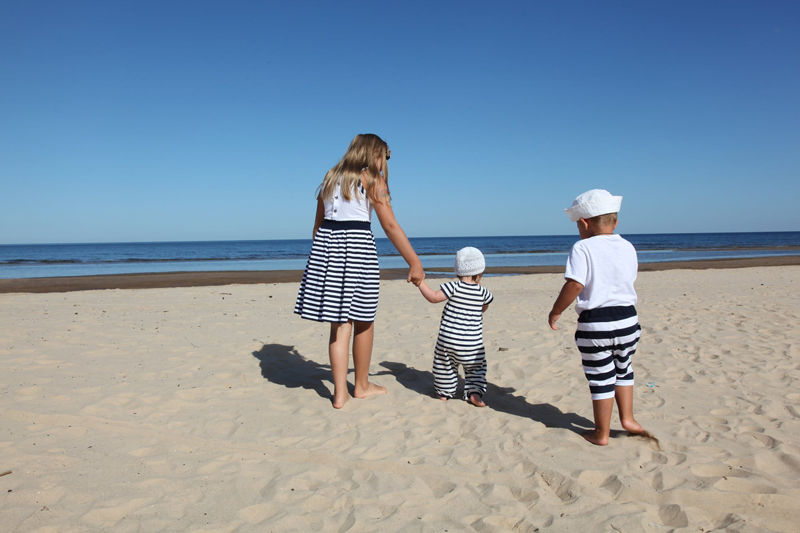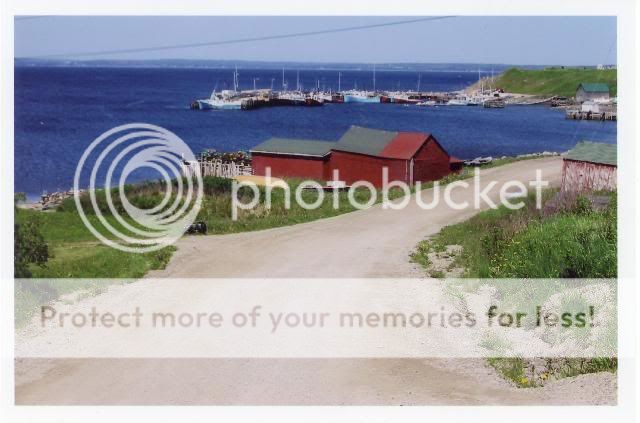Nova Scotia with Kids

The great thing about Nova Scotia, Canada’s second smallest province, is the sheer variety of landscapes and things to do and see. You can hike, camp, fish, kayak, swim, tour historic forts, photograph lighthouses, shop, catch a whale watch tour, eat locally caught seafood, and much more. The toughest part about planning a trip to Nova Scotia is deciding which area you’ll visit. You can do the whirlwind tour, driving a loop around the island and hitting the high points, or choose one area to explore more fully. Nova Scotia is at its best in the summer and early fall months, when attractions are open and local events and festivals are in full swing. Our family’s trip focused on Halifax and the south shore.
Halifax: Unfortunately, our day in Halifax was a rainy one so we missed out on the famed harbor views. Before entering the city we stopped at Fairview Cemetery, resting place of 121 victims of the Titanic which sank in 1912. The granite gravestones are arranged in an eye catching curve, many with lovely inscriptions on them. One reads:
EACH MAN STOOD AT HIS POST
WHILE ALL THE WEAKER ONES WENT BY
AND SHOWED ONCE MORE TO ALL THE WORLD
HOW ENGLISHMEN SHOULD DIE
After this sobering experience, we visited the Citadel. This massive fort overlooking Halifax’s harbor has been designated a National Historic Site for its role in Canadian history. Guided tours are available, or you can explore on your own. You’ll find an army museum, soldier’s barracks, schoolroom, and more, all brought to life by actors portraying soldiers and their wives. Our last stop in Halifax was the Maritime Museum of the Atlantic, located on the waterfront. The big draw here is the large exhibit on the Titanic, including the only surviving deck chair and a model of the ship. The museum also has a Theodore Tugboat exhibit for younger kids (this is a temporary exhibit), an excellent small craft gallery, exhibits on shipwrecks, and a gift shop.
Peggy’s Cove: The draw here is the octagonal lighthouse perched on a rocky outcropping above the ocean. Kids will enjoy clambering around the rocks, but don’t let them get anywhere near the edge, where unexpected waves may break. If your kids want to get closer to the water, Nova Scotia has plenty of beaches. One of our favorites was Hubbard’s Beach on St. Margaret Bay, a beautiful crescent of white sand with gentle surf.
Chester: Kids will enjoy looking at all the boats moored in this town’s harbor. You can get out on the water yourself by taking a ferry out to the Big and Little Tancook Islands. We visited Big Tancook and walked around the island on the dirt road, where traffic is non-existent and many car owners don’t bother with license plates. Along the way there were ocean views, an old-time general store, a cafe, and a gift shop selling handmade items.
Mahone Bay: This town attracts photographers to its three famous churches on the waterfront, and the white gazebo on the harbor is also a nice place for photos. There’s good shopping to be had here, from the wonderful baked goods at Jo-Ann’s Market and Cafe, to the specially designed pewter Christmas ornaments at Amos Pewter. Nearby Graves Island State Park is a nice spot for a picnic with facilities and a tiny beach.
Lunenburg: If your kids are interested in the seafaring history of Nova Scotia, visit the Fisheries Museum of the Atlantic in Lunenburg. Kids can learn about whaling, explore a touch tank, and tour the Bluenose II if she’s in port. There’s a seafood restaurant on site. After our visit we drove out to the tiny village of Blue Rocks, where it felt like we’d traveled back to a simpler time of modest fishing shacks perched on the rocks and lobster traps as far as the eye could see.
Digby: Our last stop in Nova Scotia was the town of Digby. Here we walked along the waterfront, admired the scallop boats, and played on the nearby playground. The Royal Fundy Fish Market at the head of Fisherman’s Wharf provided take out lunches, the scallops and calamari were amazingly fresh and a great ending to our Nova Scotia trip.
Halifax: Unfortunately, our day in Halifax was a rainy one so we missed out on the famed harbor views. Before entering the city we stopped at Fairview Cemetery, resting place of 121 victims of the Titanic which sank in 1912. The granite gravestones are arranged in an eye catching curve, many with lovely inscriptions on them. One reads:
EACH MAN STOOD AT HIS POST
WHILE ALL THE WEAKER ONES WENT BY
AND SHOWED ONCE MORE TO ALL THE WORLD
HOW ENGLISHMEN SHOULD DIE
After this sobering experience, we visited the Citadel. This massive fort overlooking Halifax’s harbor has been designated a National Historic Site for its role in Canadian history. Guided tours are available, or you can explore on your own. You’ll find an army museum, soldier’s barracks, schoolroom, and more, all brought to life by actors portraying soldiers and their wives. Our last stop in Halifax was the Maritime Museum of the Atlantic, located on the waterfront. The big draw here is the large exhibit on the Titanic, including the only surviving deck chair and a model of the ship. The museum also has a Theodore Tugboat exhibit for younger kids (this is a temporary exhibit), an excellent small craft gallery, exhibits on shipwrecks, and a gift shop.
Peggy’s Cove: The draw here is the octagonal lighthouse perched on a rocky outcropping above the ocean. Kids will enjoy clambering around the rocks, but don’t let them get anywhere near the edge, where unexpected waves may break. If your kids want to get closer to the water, Nova Scotia has plenty of beaches. One of our favorites was Hubbard’s Beach on St. Margaret Bay, a beautiful crescent of white sand with gentle surf.

Chester: Kids will enjoy looking at all the boats moored in this town’s harbor. You can get out on the water yourself by taking a ferry out to the Big and Little Tancook Islands. We visited Big Tancook and walked around the island on the dirt road, where traffic is non-existent and many car owners don’t bother with license plates. Along the way there were ocean views, an old-time general store, a cafe, and a gift shop selling handmade items.
Mahone Bay: This town attracts photographers to its three famous churches on the waterfront, and the white gazebo on the harbor is also a nice place for photos. There’s good shopping to be had here, from the wonderful baked goods at Jo-Ann’s Market and Cafe, to the specially designed pewter Christmas ornaments at Amos Pewter. Nearby Graves Island State Park is a nice spot for a picnic with facilities and a tiny beach.
Lunenburg: If your kids are interested in the seafaring history of Nova Scotia, visit the Fisheries Museum of the Atlantic in Lunenburg. Kids can learn about whaling, explore a touch tank, and tour the Bluenose II if she’s in port. There’s a seafood restaurant on site. After our visit we drove out to the tiny village of Blue Rocks, where it felt like we’d traveled back to a simpler time of modest fishing shacks perched on the rocks and lobster traps as far as the eye could see.
Digby: Our last stop in Nova Scotia was the town of Digby. Here we walked along the waterfront, admired the scallop boats, and played on the nearby playground. The Royal Fundy Fish Market at the head of Fisherman’s Wharf provided take out lunches, the scallops and calamari were amazingly fresh and a great ending to our Nova Scotia trip.
You Should Also Read:
Taking the Kids to Montreal

Related Articles
Editor's Picks Articles
Top Ten Articles
Previous Features
Site Map
Content copyright © 2023 by Kimberly Misra. All rights reserved.
This content was written by Kimberly Misra. If you wish to use this content in any manner, you need written permission. Contact Tiffiny Spire for details.


